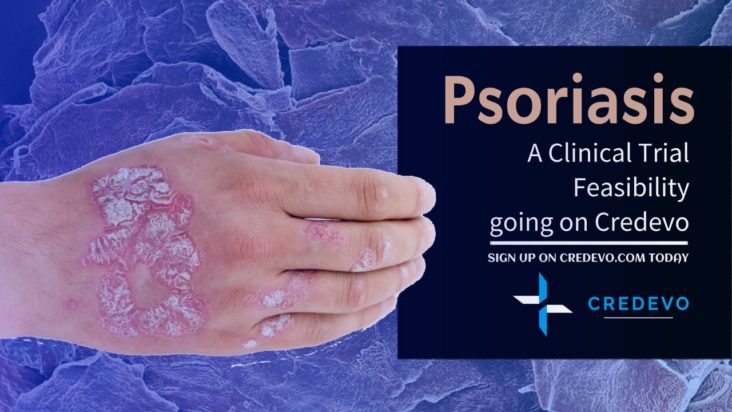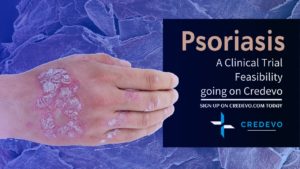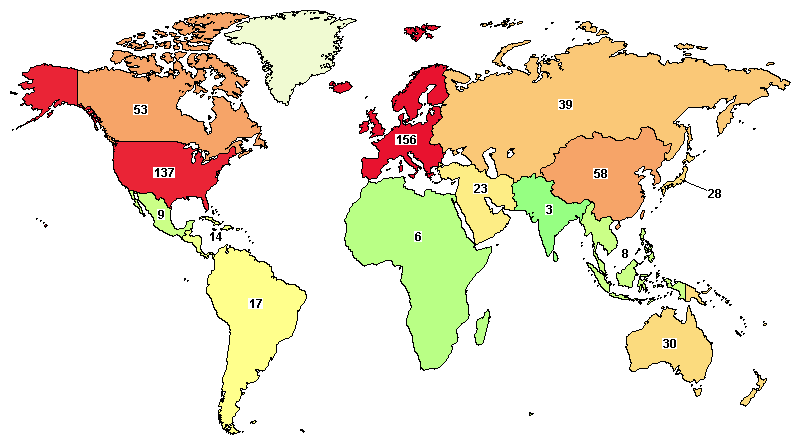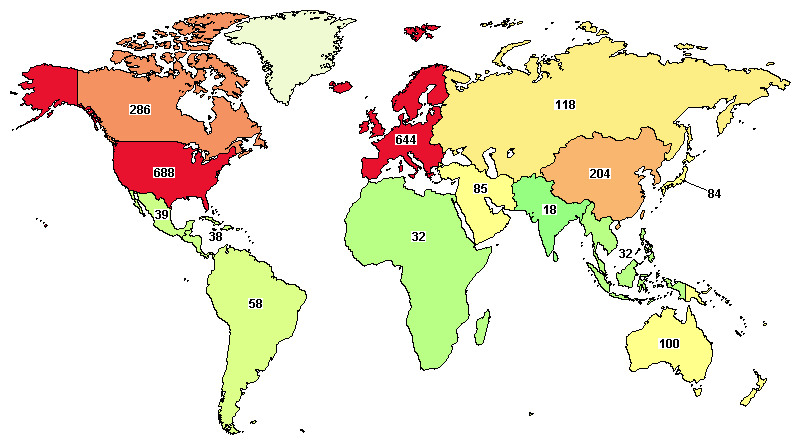Psoriasis – Clinical Trial Feasibility

Approximately one-third of people with Psoriasis report being diagnosed before age 20. The prevalence of the disease in childhood and adolescence ranges between 0.5% and 2%.

According to the World Psoriasis Day consortium 125 million people worldwide have Psoriasis. Psoriasis affects about 6.7 million Americans and is estimated to affect 2–4% of the population of the western world.
What is Psoriasis?
Psoriasis is a long-lasting autoimmune disease characterized by patches of abnormal skin which are typically red, dry, itchy, and scaly.
The stratum granulosum layer of the epidermis is often missing or significantly decreased in Psoriatic lesions, the skin cells from the most superficial layer are also abnormal as they are never fully mature. Cells multiply 10 times faster than normal, these extra skin cells form scales and red patches that are itchy and sometimes painful.
The severity of Psoriasis varies from small, localized patches to complete body coverage.
What are the types of Psoriasis?
- Plaque
- Guttate
- Inverse
- Pustular and
- Erythrodermic
What is Plaque Psoriasis?
Plaque psoriasis (also called Psoriasis Vulgaris) makes up about 90 percent of cases which typically appear as raised areas of inflamed skin covered with silvery-white scaly skin and are most commonly appear on the elbows, knees, scalp, and back. This is the most common form of psoriasis in adolescents.
What are the causes of Psoriasis?
Its pathogenesis, although not fully clarified yet, is based on a complicated interplay of genetic and environmental factors. factors. Some of the factors that trigger or exacerbate are
Genetic – One-Third of patients report a family history of Psoriasis.
Microbes – Psoriasis has been reported occurring after strep throat and may be worsened by skin or gut colonization with Staphylococcus aureus, Malassezia, and Candida albicans.
Medications – Drug-induced Psoriasis may occur with beta-blockers, Lithium, Antimalarial medications, Non-steroidal anti-inflammatory drugs, Terbinafine.
HIV – Psoriasis tends to be more severe in people infected with HIV.
Other causes – Stress (High-stress levels may increase the risk of psoriasis, Obesity, and Smoking.
What are the Signs and Symptoms?
- Psoriasis typically appears as raised areas of inflamed skin covered with silvery-white scaly skin found on the elbows, knees, scalp, and back accompanied by severe dryness, itching, swelling, and pain.
- In some cases dry, cracked skin that may bleed
- Thickened, pitted, or ridged nails
- Swollen and stiff joints.
Diagnosis
The diagnosis of psoriasis is usually based on the appearance of the skin characteristics. Typical signs for psoriasis are scaly, erythematous plaques, papules, or patches of skin that may be painful and itch.
Conditions similar in appearance are discoid eczema, seborrhoeic eczema, pityriasis rosea, nail fungus, or cutaneous T cell lymphoma.
A skin biopsy or scraping is performed to rule out other disorders and to confirm the diagnosis if necessary.
Treatment for Psoriasis
There is no permanent cure for Psoriasis. The management of psoriasis in adolescence is an intriguing and complicated task but the majority of adolescents suffer from mild psoriasis, and thus they are treated basically with topical treatment modalities.
Treatments are given for managing and controlling the severity. The treatment methodology depends on the condition or severity of the disease however there are no standard guidelines for the treatment of Psoriasis in adolescents.
- Mild Disease – Topical agents,
- Moderate disease – Phototherapy and
- Systemic agents – Severe disease
Topical agents – Corticosteroids are the first choice for the treatment of psoriasis in adolescents for 8 weeks. Generally, very potent Corticosteroids have been shown effective in reducing the severity. Other agents like Retinoids and Coal tar have not been very effective.
Vitamin D analogs such as Calcipotriene and Calcitriol as effective, well-tolerated treatments and are most preferred in adolescent Psoriasis were found to be superior to coal tar
Moisturizers and emollients such as Mineral oil, Petroleum jelly, Calcipotriol, and Decubal (an oil-in-water emollient) were found to increase the clearance of psoriatic plaques.
Phototherapy – Phototherapy with controlled exposure time has long been used for adolescents with plaque psoriasis. UVB Wavelengths of 311–313 nanometers are most effective for treating adolescent Psoriasis.
Systemic agents – Systemic therapies include medications orally or injectable treatments. Methotrexate, Ciclosporin, Hydroxycarbamide, Fumarates such as Dimethyl fumarate, and Retinoids are the drugs considered as first-line for treatment. Methotrexate is also beneficial in adolescents with the arthritic form of the disease. The majority of people experience a recurrence of psoriasis after discontinuation of systemic treatment.
Biologic drugs – Another kind of systemic drug that targets the immune system are biologics and have emerged as a new therapeutic option for the treatment of moderate-to-severe psoriasis that has failed to respond to systemic agents. These include Ustekinumab, Etanercept, etc.
Feasibility study on Psoriasis has been conducted on Credevo
Would you like to contact these investigators and assess feasibility with them for your clinical trial? Check details below.
Prevalence of Psoriasis
- According to the World Psoriasis Day consortium, 125 million people (2 to 3 percent of the total population) worldwide have psoriasis.
- The prevalence of the disease in childhood and adolescence ranges between 0.5% and 2%, while its estimated incidence was reported to be 40.8 pediatric cases/100,000 person-years.
- It most commonly appears for the first time between the ages of 15 and 25 years.
- Approximately one-third of people with psoriasis report being diagnosed before age 20 and affects both sexes equally.
- Psoriasis is estimated to affect 2–4% of the population of the western world.
- Psoriasis affects about 7.5 million (Approx – 2.2 %) Americans and occurs more frequently in adults.
- The rate of psoriasis varies according to age, region, and ethnicity; a combination of environmental and genetic factors is thought to be responsible for these differences.
- Psoriasis prevalence in African Americans is 1.3 percent compared to 2.5 percent of Caucasians 1 percent.
Clinical Trials on Psoriasis worldwide
A total of 1,672 Clinical trials on Psoriasis are registered around the world, where major studies are from the United States (688), Germany (292), Canada (286), France (179), and United Kingdom (175).

On-going trials around the world on Psoriasis are 294, in which major studies are in the United States (137), Germany (65), Canada (53), United Kingdom (46), and France (44).

Contact Investigators
Would you like to contact these investigators and assess feasibility with them for your clinical trial?
Just provide your email below and further details will be sent to you. Don’t worry, your email will not be published or shared.
For other details, click here to contact us.
Reference
- https://en.wikipedia.org/wiki/Psoriasis
- https://www.webmd.com/skin-problems-and-treatments/psoriasis/default.htm
- https://www.mayoclinic.org/diseases-conditions/psoriasis/symptoms-causes/syc-20355840
- https://www.psoriasis.org/about-psoriasis
- https://clinicaltrials.gov/ct2/results/map?recrs=ad&cond=Psoriasis&map=
- https://www.ncbi.nlm.nih.gov/pmc/articles/PMC3961070/